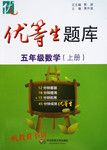题目内容
Neither could theory do without practice, ________ without theory.
- A.nor practice could do
- B.nor could practice do
- C.or could practice do
- D.practice could do nor
neither和nor放在句首都要引导部分倒装。

 优等生题库系列答案
优等生题库系列答案 53天天练系列答案
53天天练系列答案Two friends have an argument that breaks up their friendship forever, even though neither one can remember how the whole thing got started. Such sad events happen over and over in high schools across the country. In fact, according to an official report on youth violence, "In our country today, the greatest threat to the lives of children and adolescents is not disease or starvation or abandonment, but the terrible reality of violence". Given that this is the case, why aren't students taught to manage conflict the way they are taught to solve math problems, drive ears, or stay physically fit?
First of all, students need to realize that conflict is unavoidable. A report on violence among middle school and high school students indicates that most violent incidents between students begin with a relatively minor insult (侮辱). For example, a fight could start over the fact that one student eats a peanut butter sandwich each lunchtime. Laughter over the sandwich can lead to insults, which in turn can lead to violence. The problem isn't in the sandwich, but in the way students deal with the conflict.
Once students recognize that conflict is unavoidable, they can practice the golden rule of conflict resolution (解决) : stay calm. Once the student feels calmer, he or she should choose words that will calm the other person down as well Rude words, name-calling, and accusations only add fuel to the emotional fire. On the other hand, soft words spoken at a normal sound level can put out the fire before it explodes out of control.
After both sides have calmed down, they can use another key strategy (策略) for conflict resolution : listening. Listening allows the two sides to understand each other. One person should describe his or her side, and the other person should listen without interrupting. Afterward, the listener can ask non-threatening questions to clarify the speaker's position. Then the two people should change roles.
Finally, students need to consider what they are hearing. This doesn't mean trying to figure out what's wrong with the other person. It means understanding what the real issue is and what both sides are trying to accomplish. For example, a shouting match over a peanut butter sandwich might happen because one person thinks the other person is unwilling to try new things. Students need to ask themselves questions such as these: How did this start? What do I really want? What am I afraid of? As the issue becomes clearer, the conflict often simply becomes smaller. Even if it doesn't, careful thought helps both sides figure out a mutual solution.
There will always be conflict in schools, but that doesn't mean there needs to be violence. After students in Atlanta started a conflict resolution program, according to Educators for Social Responsibility, "64 percent of the teachers reported less physical violence in the classroom; 75 percent of the teachers reported an increase in student co-operation; and 92 percent of the students felt better about themselves'. Learning to resolve conflicts can help students deal with friends, teachers, parents, bosses, and coworkers. In that way, conflict resolution is a basic life skill that should be taught in schools across the country.
1.From Paragraph 2 we can learn that_______
|
A.violence is more likely to occur at lunchtime |
|
B.a small conflict can lead to violence |
|
C.students tend to lose their temper easily |
|
D.the eating habit of a student is often the cause of a fight |
2.Why do students need to ask themselves the questions stated in Paragraph 5?
|
A.To find out who is to blame. |
|
B.To get ready to try new things. |
|
C.To make clear what the real issue is. |
|
D.To figure out how to stop the shouting match. |
3.After the conflict resolution program was started in Atlanta, it was found that______
|
A.there was a decrease in classroom violence |
|
B.there was less student cooperation in the classroom |
|
C.more teachers felt better about themselves in schools |
|
D.the teacher-student relationship greatly improved |
4.The writer's purpose for writing this article is to_______
|
A.complain about problems in school education |
|
B.teach students different strategies for school life |
|
C.favor teaching conflict management in schools |
|
D.inform teachers of the latest studies on school violence |
Learning English is a great challenge, but with a little help from technology it can be as easy as a piece of cake.
As well as the classroom, teachers and textbooks, the Internet, TV and radio programs can play an active role in helping learn English. The Internet is full of rich and up-to-date information. English learners might wish to try http://www.in2english.com.cn. This website is co-established by the British Council, the BBC World Service and Central Radio and TV University. It provides cultural information about Britain and has an example of the IELTS (International English Language Testing System) that students can use for practice. Different levels of grammar tests can also be found.
Make friends online
Another useful website for middle school students and teachers is: Besides reading 21st Century School Edition online, students are also invited to put their views on different topics up on the website.
Users have the opportunity to make friends with people who share their interests.
In the teaching and learning section, there are reading and vocabulary tips for students.
Compared with the Internet, TV programs have their own advantages: one does not have to sit at a computer and the audio and visual effects can even be relaxing.
One popular English-learning program is called "Modern English". This focuses on oral English in practical situations such as taking photos and shopping.
The short dialogues and useful phrases may help students to express themselves if they go abroad or meet foreigners in China. More than 50 TV stations in about 300 cities have aired the program.
Word to World
If you watch Beijing Television Channel 8, you might see a program titled "Study Abroad". On this show Professor Wang Qiang from New Oriental School hosts "From Word to World".
He selects words with a deep cultural background and teaches useful phrases related to that word. Cartoons are also used to explain how to use the word in daily life. Listening to the radio may not be a new way to learn English but it is easy.
China Radio International airs a program called "Studio Classroom" at 6:30 a.m. every day. This 25-minute program is aimed at middle school students and covers subjects from current news to travel and history, all in simple language.
1. This passage ______.
|
A.introduces some new websites and TV and radio programs |
|
B.focuses on advantages and disadvantages of different medium forms |
|
C.recommends technological help in learning English |
|
D.aims at advertising various English courses |
2. If you want to read an English newspaper and make comments on different topics, you try_____.
|
A.www.in2english.com.cn. |
B.www.21st.com.cn. |
|
C.Modern English |
D.Studio Classroom |
3.One can practise oral English in everyday situations in _____.
|
A.Studio Classroom |
B.From Word to World |
|
C.Study Abroad |
D.Modern English |
4.According to the author, one advantage of TV programs over the Internet is that they ____.
|
A.offer more English learning resources |
|
B.cost you nothing |
|
C.have better audio and visual effects |
|
D.have English courses available whenever you need them |
5.The author wants the readers to know that learning English ______.
|
A.is difficult |
|
B.is easy |
|
C.is neither easy nor difficult |
|
D.can be made much easier with a little help of modern technology |